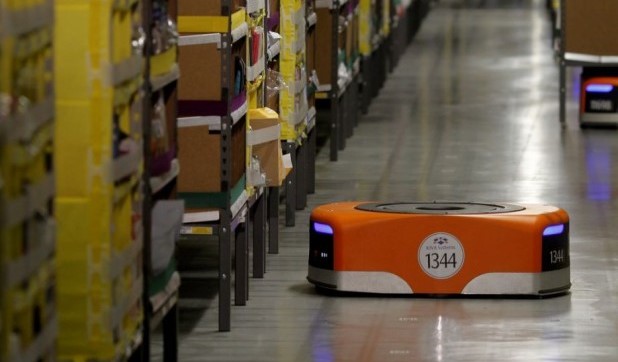 Robotics can help, but not yet fully solve, the labor shortage in the distribution sector.
Robotics can help, but not yet fully solve, the labor shortage in the distribution sector.
CHICAGO—Rich Thompson, global lead of Chicago-based JLL's supply chain and logistics solutions team, has been with the company for more than a decade and before that he had a long career as a consultant for big corporate occupiers. “I have seen it all,” he tells GlobeSt.com, and some of the most significant changes in the market have occurred in just the past two years.
The cost drivers for this portion of industrial real estate have been, in order, transportation, labor, inventory and then real estate. “It's always been in that order in terms of weight and importance,” Thompson says. But recently, “labor has become the most influential site selection criteria. That is a really new phenomenon.”
In the past, a 500,000 square foot distribution facility would be run by about 75 people driving around in forklifts. Modern facilities of the similar size, however, can employ three to ten times that number, depending on the work done and the time of year. And many of these jobs require more skill. “They're doing pick and pack, they're not just driving forklifts.”
And with the national unemployment rate dropping to just 3.8%, which many economists consider near to effective full employment, companies that need employees are adopting different strategies.
Amazon was way ahead of everyone else in the use of high-tech. Its $775 million acquisition of Riva Systems, a robotics start-up, in 2012 may have surprised a lot of people at the time, but its importance to transforming the e-commerce giant is now apparent.
Other tech tools, such as headsets that can help direct employees to correct packages can expand the pool of available workers. “That takes language out of the picture,” Thompson says, as workers that don't speak English will be able to pick and pack products as well as those that do.
The Trump Administration's recent immigration moves, however, may make that pool of labor riskier than previously.
Others are experimenting with providing air conditioning, more sophisticated common areas, and better lighting. Thompson believes he may have seen the future, and it's in Japan. On a recent trip, he toured some of that nation's major distribution facilities which had “human-centric designs meant to attract and retain labor.” The break areas, for example, were not just some benches and soda machines. “They looked like you were in a bar in New York City.” One facility even had a climbing wall. Child care centers were there to help out workers that were also parents.
But eventually, what may be needed most of all is boosts in wages. Thompson was recently at a conference with warehouse operators, and one representative of a multibillion dollar company told other participants that “'we're just paying more money,' and 'it's working for us.'”
Still, even if the economy stalls, and that unemployment rate rises again, there will be no slowdown for e-commerce. He estimates about 9.5% of all retail sales use e-commerce channels, a percentage which could soon grow to 30%. And that “will still drive demand,” Thompson says. “The challenge around attracting and retaining labor will continue.”





